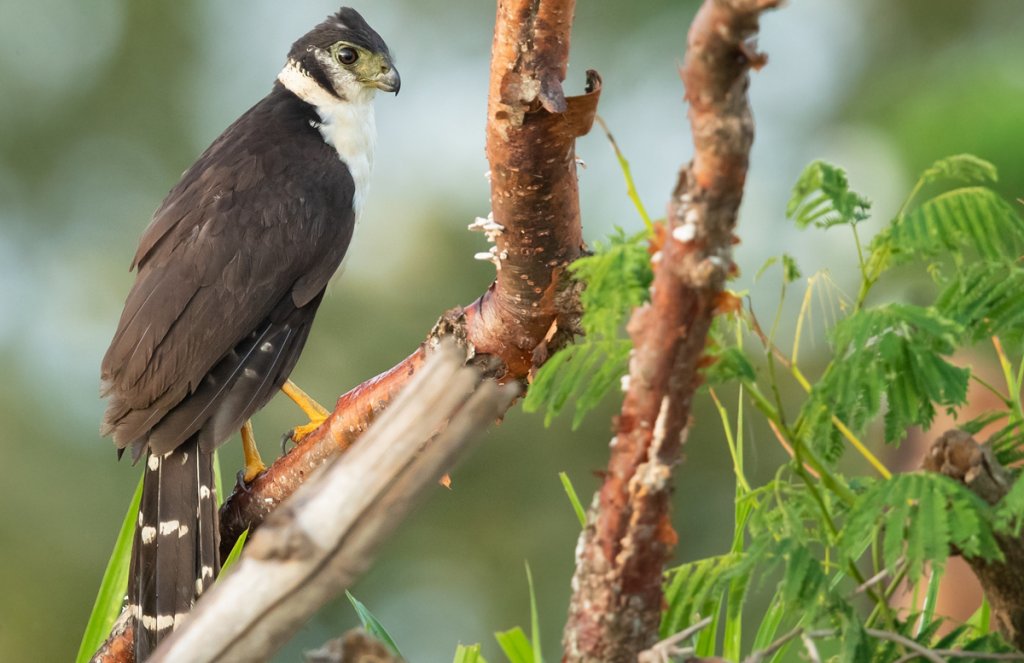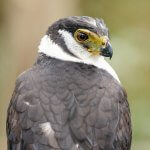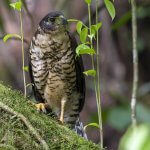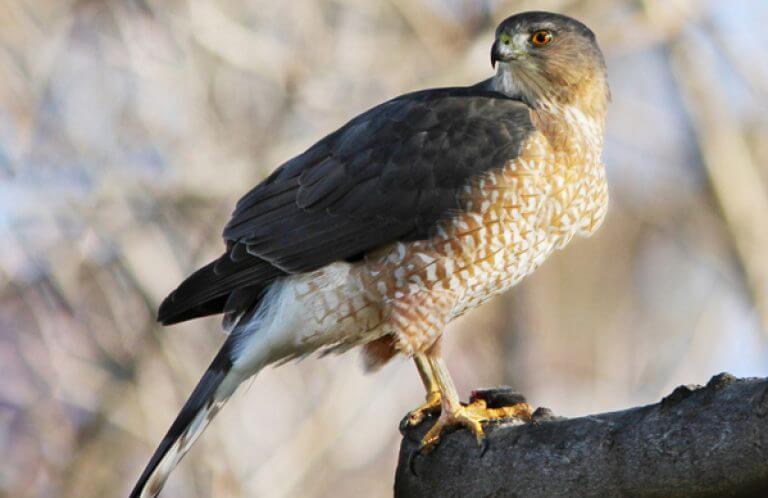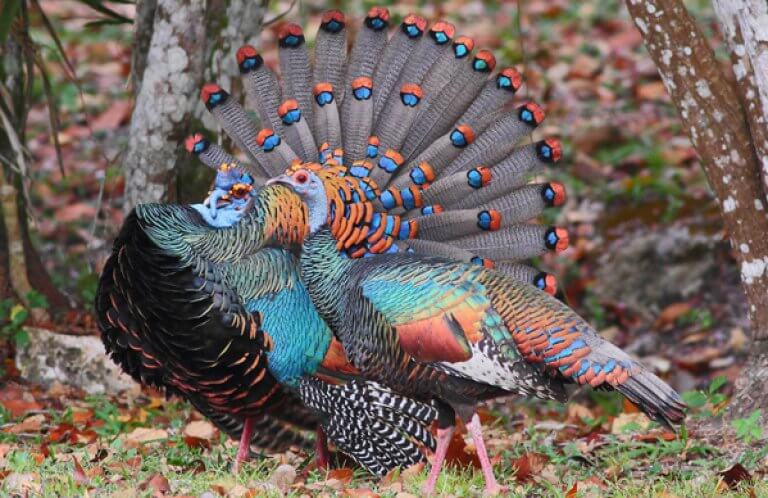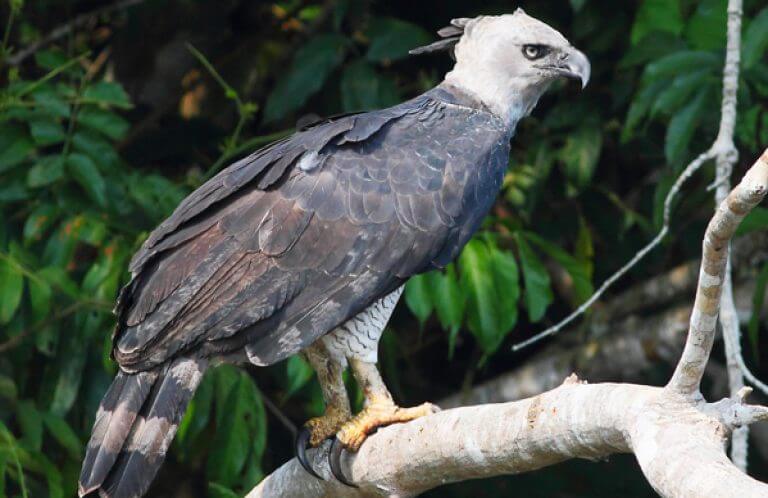About the Collared Forest-Falcon
The common but cryptic Collared Forest-Falcon is the largest, most wide-ranging member of its genus (Micrastur), a group of raptors found only in the Neotropics. Forest-falcons closely resemble North American accipiters such as the Cooper's Hawk, with short wings, long tails, and an agile, undercover hunting style.
The Collared Forest-Falcon can be found in three color morphs: pale, which is dark-backed and white below; buff, which is pale buff to reddish-brown below; and a rarer dark morph, which is a uniform black to dark brownish gray. The pale and buff-bellied morphs have a contrasting collar, which gives the species its Latin name, semitorquatus (partly collared). All morphs have large eyes, dark, white-banded tails, and long yellow legs. As in other raptors, the female is larger than the male.
Although the Collared Forest-Falcon and its close kin resemble accipiters, they actually belong to another branch of the raptor family.
Undercover Falcon
Although it may be mistaken as a member of the Accipitridae family (a large group of raptors that includes the familiar Red-tailed and Red-shouldered Hawks, as well as Cooper's and Sharp-shinned Hawks), the Collared Forest-Falcon is actually part of a separate family — the Falconidae, which includes the Peregrine and Prairie Falcons, American Kestrel, and Merlin. Forest-falcons are placed in this family due to a variety of physical features and the most recent genetic evidence, despite their accipiter-like appearance.
Songs and Sounds
The Collared Forest-Falcon is much more often heard than seen, as it tends to call from within thick cover. Its most common call, often given alternately by both sexes in a duet, is a hollow-sounding auw.'
Listen here:
Alternate call, a more rapid series of notes:
Breeding and Feeding
The Collared Forest-Falcon nests in natural tree and cliffside cavities, caves, and sometimes even in abandoned buildings. Its nest often has multiple entrances. During courtship, the male feeds the female. She lays 1-3 eggs, which she incubates alone, although the male brings her food while she's on the nest. Once the eggs hatch, the young falcons are fed by both parents. Its wide-ranging diet is predominantly made up of birds up to the size of the Great Curassow and Ocellated Turkey (incredibly large prey for a birds its size!), but also includes a mixture of large insects, lizards, rodents.
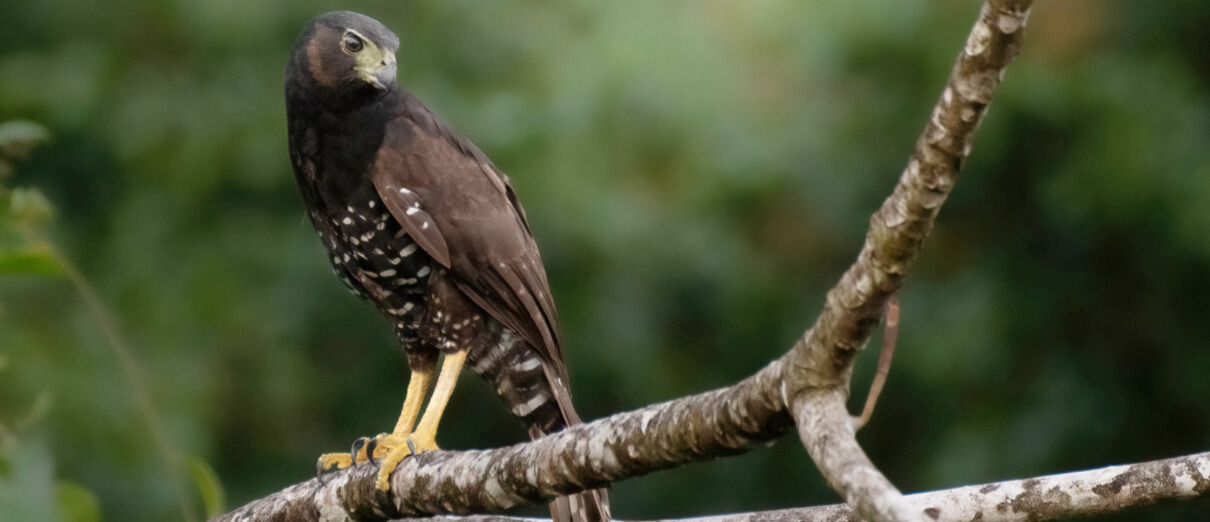
Like the Harpy Eagle, the Collared Forest-Falcon is adapted for ambush hunting, with short, wide wings and a long tail that allow for agile maneuvers through thick undergrowth. It hunts by sitting quietly on a concealed perch until it hears prey, then pounces down on it. It also pursues prey on foot along large branches or on the ground. The Collared Forest-Falcon may even be seen following army ant swarms to capture prey flushed by the ants.
Region and Range
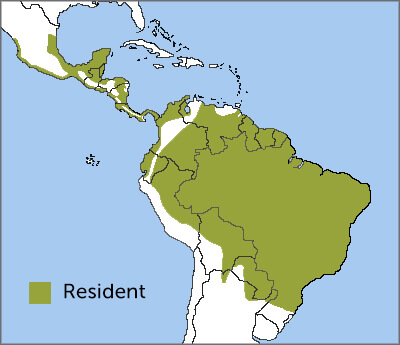
The Collared Forest-Falcon has the widest distribution in its genus, occurring from northwestern and northeastern Mexico through much of Central America and south to northern Argentina. Two subspecies are recognized. This species inhabits a wide array of lowland habitats throughout its range, from primary and second-growth forest edge to scrubby habitats.
Conservation
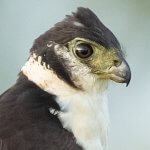
Help support ABC's conservation mission!
Although it's widespread and considered fairly common, the Collared Forest-Falcon is still threatened by habitat loss, particularly from logging, which takes out trees suitable for nest sites.
This stealthy species has been observed in close to 30 ABC-supported reserves throughout the neotropics, including Siera Caral in Guatemala, Stresemann's Bristlefront Reserve in Brazil, and Abra Patricia in Peru. For more information on visiting these places and other ABC reserves, visit Conservation Birding.
Get Involved
Many of the rarest bird species in the Western Hemisphere remain relatively unknown. You can learn more about these birds and the threats they face by signing up for ABC's Bird of the Week email series, which frequently highlights these fascinating birds.
American Bird Conservancy and our partners throughout Latin America and the Caribbean have created and expanded more than 100 bird reserves, which protect upward of 1.1 million acres of vital habitat. Together, we've planted more than 6.8 million trees, helping to restore degraded and damaged habitat. You can help us continue to protect endangered birds by making a gift today.





































